
British Shorthair Size Guide: How Big Do British Shorthair Cats Get?
The British Shorthair cat is famous for its plush coat, round cheeks, and sturdy build. But one of the most common questions buyers ask is, “How big do British Shorthairs get?”
These cats are known for their slow, steady growth and strong bone structure that gives them a teddy-bear appearance even in adulthood.
On average, an adult male British Shorthair weighs between 12 and 17 pounds, while females range from 8 to 13 pounds. Their solid bodies and broad chests make them one of the heaviest shorthaired breeds without being overweight.
👉 Apply now for a British Shorthair kitten from Almonte Cats and bring home a confident, well-socialized companion with authentic British type and build.
British Shorthair Growth Chart by Age
| Age | Average Male Weight | Average Female Weight | Growth Notes |
|---|---|---|---|
| 8 weeks | 2 – 3 lbs | 1.8 – 2.5 lbs | Still a compact kitten; playful and round |
| 4 months | 4 – 6 lbs | 3.5 – 5 lbs | Developing strong bones and thick coat |
| 6 months | 7 – 9 lbs | 6 – 8 lbs | Starts showing sturdy chest and frame |
| 1 year | 10 – 13 lbs | 8 – 10 lbs | Most cats reach 75% of adult size |
| 2–3 years | 12 – 17 lbs | 8 – 13 lbs | Full maturity; slow growth continues |
| 4+ years | 12 – 18 lbs | 9 – 14 lbs | Weight stabilizes; dense muscle mass |
British Shorthairs are late bloomers. They can take up to three years to reach full size, much longer than most cat breeds.
This slow development contributes to their strong, balanced physique and calm temperament.
Why British Shorthairs Grow Slowly
Unlike lighter breeds, the British Shorthair cat was originally bred for durability and working ability. Their heritage as “farm cats” and “mousers” in Britain created a naturally robust body type.
Even when raised indoors, British Shorthairs maintain their signature solid bone structure, thick shoulders, and muscular limbs.
Slow growth also supports proper joint and skeletal development. Reputable breeders feed a high-quality, protein-rich diet and monitor weight carefully to ensure steady, healthy gains without early obesity.
Average British Shorthair Cat Size vs Other Breeds
| Breed | Average Weight | Build Type | Growth Rate |
|---|---|---|---|
| British Shorthair | 12 – 17 lbs | Stocky, muscular | Slow, up to 3 years |
| Maine Coon | 14 – 20 lbs | Large, long-bodied | Moderate |
| Ragdoll | 12 – 20 lbs | Long, semi-longhair | Fast |
| Scottish Fold | 8 – 12 lbs | Medium, compact | Moderate |
| American Shorthair | 10 – 15 lbs | Athletic | Moderate |
The British Shorthair is shorter but denser than the Maine Coon or Ragdoll. Their power lies in proportion — short legs, broad chest, and thick neck. Even a 12-pound British Shorthair can look as big as a 15-pound Ragdoll because of coat density and bone weight.
For more comparisons, visit our post on British Shorthair vs Ragdoll Cats.
British Shorthair Body Shape Explained
The breed standard describes the British Shorthair as “cobby” — a term used by cat associations to define a rounded, well-balanced body with equal proportions.
- Head: Round with full cheeks and a short nose
- Body: Compact, deep chest, and level back
- Legs: Thick, medium length with round paws
- Tail: Medium length with a rounded tip
This combination gives the breed its recognizable “teddy-bear” silhouette. Even at a glance, the sturdy frame and thick tail base distinguish them from lighter shorthair breeds.
When Does a British Shorthair Kitten Stop Growing?
Most British Shorthair kittens continue to grow steadily until they are 24–36 months old.
At 12 months, they look fully grown to the untrained eye, but their body still develops internally — gaining width and muscle rather than height.
Males usually mature later than females, reaching their full adult bulk closer to age three.
Kittens that are spayed or neutered early may fill out faster because their energy shifts from hormone production to body growth, but overall size is still mostly genetic.
For owners tracking their kitten’s milestones, see our full British Shorthair growth stages guide.
How Diet Affects Size and Growth
Feeding a proper diet plays a major role in achieving the correct British Shorthair body type.
Choose a formula with high animal protein (minimum 35%) and moderate fat to support muscle growth without excess weight gain.
Avoid overfeeding, as British Shorthairs have a naturally calm temperament and can gain weight easily if meals are not portion-controlled.
Recommended feeding schedule:
- Kittens (up to 6 months): 3–4 small meals daily
- 6–12 months: 2–3 meals daily
- Adults: 2 balanced meals daily with a small nighttime snack
Quality nutrition keeps bones strong, coats plush, and joints supported during slow maturation. Visit our British Shorthair diet and nutrition guide for specific food recommendations.
Are Male British Shorthairs Bigger Than Females?
Yes. Males tend to weigh 2–5 pounds more than females and have broader heads, thicker necks, and heavier bones. Females, while smaller, still maintain the breed’s rounded appearance and compact strength.
In families with both sexes, males often continue growing for an extra 6–12 months beyond the females’ full size.
Do British Blue Cats Grow Larger Than Other Colors?
Color doesn’t directly determine size, but British Blue Shorthairs often appear larger due to coat density. The plush blue fur amplifies their rounded silhouette, giving them that classic “solid” look.
Breeders have selectively refined the British Blue lines for decades, sometimes reinforcing the broader structure typical of early champion bloodlines.
For details, read our British Blue Shorthair guide.
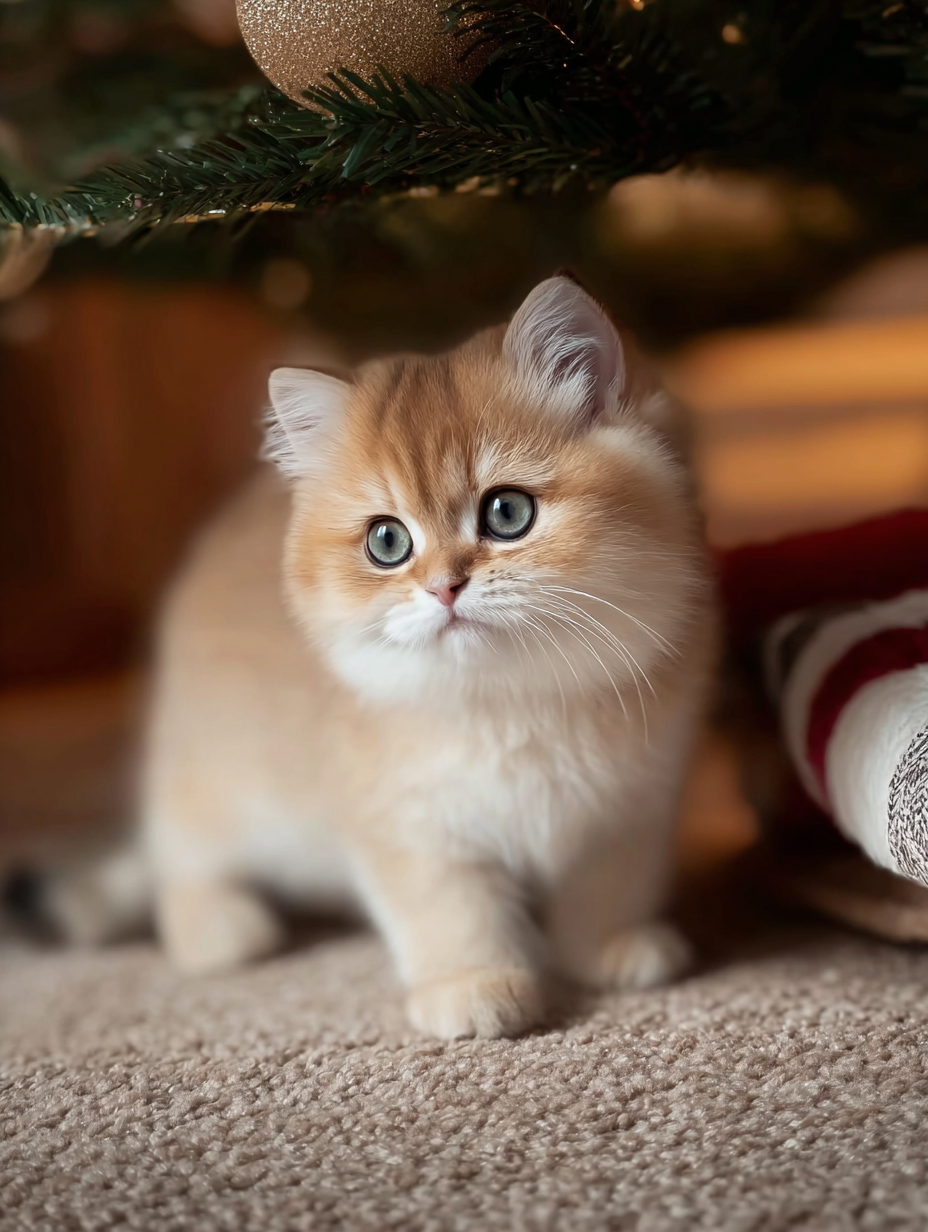
How to Tell if a British Shorthair Kitten Will Be Large
There are a few early indicators:
- Thick legs and broad paws at 8–10 weeks suggest future mass.
- Wide chest and round belly in kittenhood are signs of bone strength, not fat.
- Slow, steady growth rather than rapid gain predicts proper structure.
Genetics play the largest role. Kittens from heavy-boned parents almost always mature into large, sturdy adults.
Managing Weight in Adult British Shorthairs
Because of their calm nature, adult British Shorthairs can easily become overweight.
Aim to maintain a lean muscle tone rather than softness around the midsection. You should feel ribs lightly under a thick coat, but not see them.
Use interactive toys, short play sessions, or gentle climbing structures to encourage daily activity.
Learn more in our British Shorthair health and fitness guide.
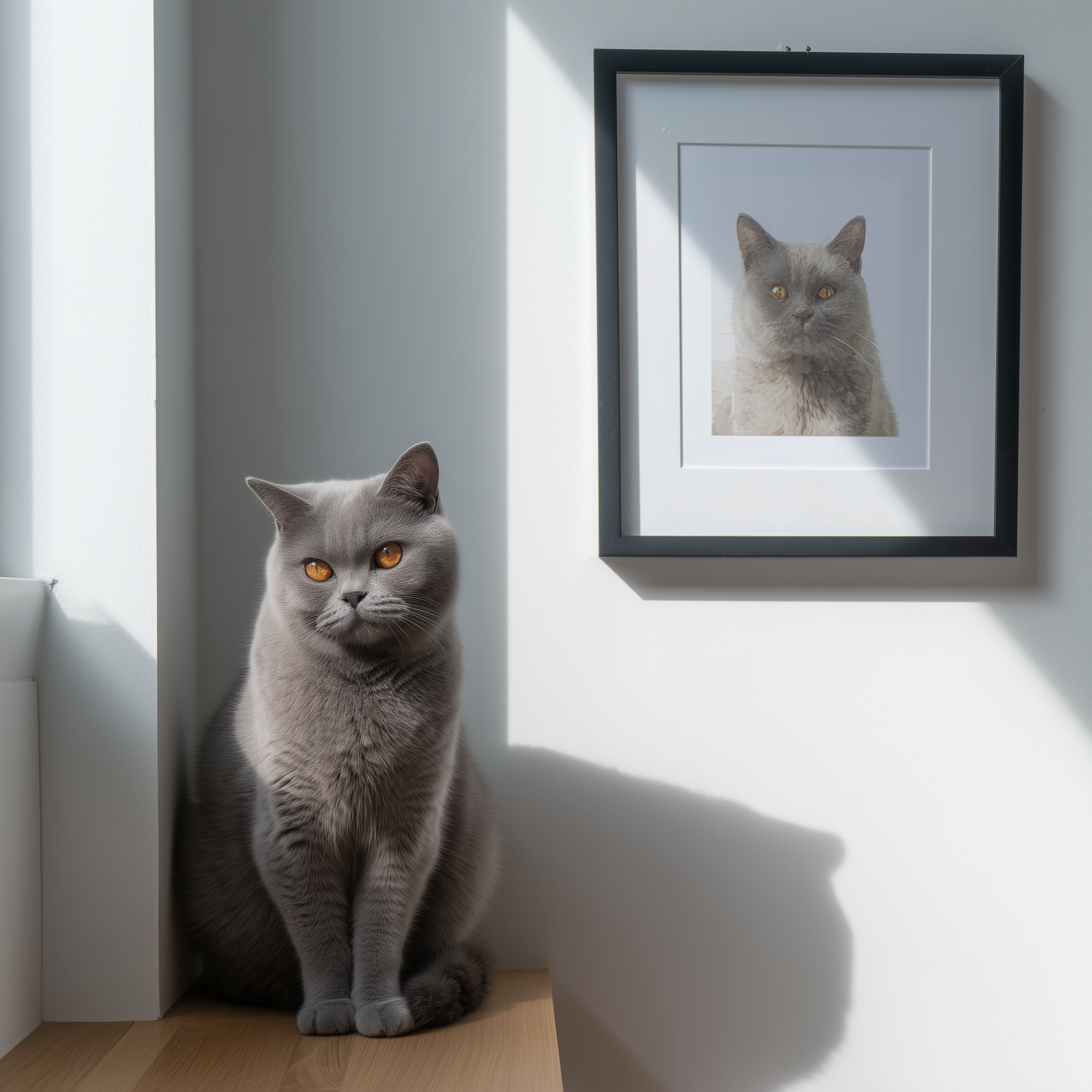
Graph: British Shorthair Weight by Age and Sex
| Age (Months) | Male Avg. Weight | Female Avg. Weight |
|---|---|---|
| 2 | 2.5 lbs | 2.0 lbs |
| 4 | 5.5 lbs | 4.5 lbs |
| 6 | 8.5 lbs | 7.0 lbs |
| 12 | 12.0 lbs | 9.5 lbs |
| 24 | 15.0 lbs | 11.5 lbs |
| 36 | 17.0 lbs | 13.0 lbs |
This gradual climb reflects the breed’s three-year maturation — slow, steady, and balanced.
What Is the Average Weight for a Male Shorthair Cat?
Male shorthaired cats vary widely by breed, but the average male shorthair cat weighs between 10 and 15 pounds. This includes both purebred and domestic shorthair types. Most shorthaired cats are naturally athletic, with moderate muscle mass and lean frames that support agility and endurance.
When compared to the British Shorthair, however, the difference is immediately noticeable. British Shorthair males often reach 14 to 17 pounds, with some lines maturing closer to 18 pounds. This is due to their thick bone density, broader chest, and genetic selection for a heavier body type.
While domestic or American shorthairs carry more of a “house cat” physique, the British Shorthair’s cobby build is distinctive — short, strong legs, round cheeks, and a level back.
If you’re researching male kitten growth, remember that British Shorthair males take up to three years to mature fully, unlike lighter shorthair breeds that complete development around one year.
For full growth charts, see our British Shorthair Growth by Age section.
American Shorthair Average Weight
The American Shorthair is one of the most common shorthaired breeds in the United States and serves as a useful baseline for comparison.
- Average male American Shorthair weight: 11–15 pounds
- Average female American Shorthair weight: 8–12 pounds
They have a balanced, muscular body with strong limbs and medium bone structure. Their size allows for endurance and playfulness without the heavier density seen in British lines.
While both breeds share a calm temperament and easy-care coat, the British Shorthair is bulkier, more solid, and has a shorter muzzle and rounder face. The American Shorthair’s frame is slightly longer and more athletic, while the British maintains a compact, teddy-bear silhouette.
In simple terms:
American Shorthairs are medium-solid; British Shorthairs are compact-solid.
See our British Shorthair vs American Shorthair Comparison Guide for detailed visuals.
Female Shorthair Average Weight
Female shorthair cats are generally smaller, lighter, and more refined in bone than males.
Across breeds, the average female shorthair cat weighs between 8 and 12 pounds.
This includes British, American, and European shorthair types.
Female British Shorthairs typically stay between 8 and 13 pounds, carrying a proportionate build with excellent balance and muscle tone. Even though they’re lighter than males, they retain the breed’s signature dense body and round cheeks.
In contrast, female American Shorthairs usually fall between 8 and 11 pounds. They’re a touch leaner with slightly longer legs and a narrower chest. Their frame is ideal for agility and activity, while British Shorthairs maintain a more “anchored” look.
Both sexes of the British breed grow slowly, but females tend to reach full maturity around two years old, about six months earlier than males.
For more gender-specific growth charts, see our British Shorthair Male vs Female Size analysis.
Graph: British Shorthair vs Average Shorthair Cat Size Comparison
| Category | Male Average Weight | Female Average Weight | Body Type | Growth Rate | Build Summary |
|---|---|---|---|---|---|
| British Shorthair | 14 – 17 lbs | 8 – 13 lbs | Stocky, muscular | Slow (2–3 yrs) | Compact, heavy bone, plush coat |
| American Shorthair | 11 – 15 lbs | 8 – 12 lbs | Balanced, medium build | Moderate (1–2 yrs) | Athletic, slightly longer body |
| European Shorthair | 10 – 14 lbs | 7 – 11 lbs | Lean-muscled | Moderate | Adaptable working cat frame |
| Domestic Shorthair (Mixed) | 8 – 12 lbs | 6 – 10 lbs | Variable | Fast (1 yr) | Depends on lineage and diet |
| British Longhair (for reference) | 13 – 17 lbs | 8 – 13 lbs | Plush, heavy coat | Slow (2–3 yrs) | Same structure, longer fur |
British Shorthair vs American Shorthair Size Summary:
The average shorthair cat weighs 8–15 pounds depending on breed, sex, and build.
The British Shorthair stands out as one of the densest shorthaired cats, with males averaging 14–17 pounds and females 8–13 pounds.
The American Shorthair averages slightly less, with a leaner, more athletic shape.
Both breeds are excellent companions, but the British Shorthair’s slow growth and heavy bone give it the solid, plush look admired worldwide.
👉 Apply now for a British Shorthair kitten from Almonte Cats to experience this beautiful, balanced breed firsthand.
British Shorthair vs American Shorthair Differences
Although both breeds share the name “Shorthair,” the British Shorthair and American Shorthair differ significantly in structure, build, and overall presence.
The British Shorthair is stockier, broader, and denser, while the American Shorthair carries a medium-athletic frame. These differences come from decades of breeding for separate purposes — one built for endurance and hunting, the other for calm companionship and show presence.
Overall Size and Weight
British Shorthairs are naturally heavier and more compact than most shorthaired breeds.
Males average 14–17 pounds, and females typically weigh 8–13 pounds.
By contrast, American Shorthair males usually range from 11–15 pounds, and females 8–12 pounds.
Although their numbers overlap, the British Shorthair’s heavier bone density and muscle structure make it feel much more solid when held.
Body Shape and Proportion
British Shorthairs are classified as cobby, meaning they have short, round bodies, sturdy legs, and broad chests. Their overall outline is plush, balanced, and symmetrical.
American Shorthairs, on the other hand, tend to be longer and more athletic. They have leaner limbs, a flexible spine, and a smooth stride that gives them a taller, more agile appearance.
Growth and Maturity
British Shorthairs are slow growers, often taking up to three years to reach full size. Their development focuses on steady bone and muscle growth rather than quick length gains.
The American Shorthair matures more rapidly, usually finishing growth around 18 months.
This slower maturity in the British breed produces thicker muscle and bone density over time, resulting in that signature “teddy-bear” build.
While both breeds have short coats, the British Shorthair’s fur is noticeably denser and stands upright, giving the impression of greater bulk.
The American Shorthair has a flatter, sleeker coat that lies close to the body, accentuating its athletic and elongated frame.
This subtle difference in coat texture adds to the British Shorthair’s rounded, plush look.
Temperament and Energy Level
The British Shorthair is calm, steady, and deliberate in its movements, often preferring quiet companionship over constant play.
In contrast, the American Shorthair is more active and alert, maintaining a lighter frame through frequent bursts of energy and curiosity.
Both breeds are intelligent, family-friendly cats, but the British Shorthair’s calm nature and dense physique make it feel noticeably sturdier and more grounded.
| Breed | Male Avg. Weight | Female Avg. Weight | Build Type | Growth Completion | Coat Density | Visual Impression |
|---|---|---|---|---|---|---|
| British Shorthair | 14–17 lbs | 8–13 lbs | Compact, muscular | 2–3 years | Dense double coat | Plush, solid |
| American Shorthair | 11–15 lbs | 8–12 lbs | Medium-athletic | 1–1.5 years | Short, sleek coat | Lean, agile |
For cat owners who prefer a more compact, plush-bodied companion, the British Shorthair offers timeless appeal.
For those who enjoy a slimmer, playful, and active cat, the American Shorthair is a perfect fit.
Both are loving, gentle breeds — but only the British Shorthair carries that unmistakable heft and plush density that defines its heritage.
👉 Apply now for a British Shorthair kitten from Almonte Cats to experience the difference for yourself.
British Shorthair Weight Compared to 10 Popular Cat Breeds
| Breed | Male Avg. Weight | Female Avg. Weight | Build Type | Coat Type | Growth Rate | Notable Trait |
|---|---|---|---|---|---|---|
| British Shorthair | 14 – 17 lbs | 8 – 13 lbs | Stocky, muscular | Short, dense | Slow (2–3 yrs) | Compact “teddy-bear” physique |
| American Shorthair | 11 – 15 lbs | 8 – 12 lbs | Medium, athletic | Short, sleek | Moderate | Balanced hunter build |
| Maine Coon | 15 – 25 lbs | 12 – 18 lbs | Large, rectangular | Long, shaggy | Moderate | Largest domestic cat breed |
| Ragdoll | 14 – 20 lbs | 10 – 15 lbs | Long, semi-cobby | Silky, long | Moderate | Floppy, gentle giant |
| Scottish Fold | 9 – 13 lbs | 7 – 11 lbs | Medium, rounded | Short or long | Moderate | Folded ears, compact frame |
| Siberian | 13 – 17 lbs | 9 – 13 lbs | Heavy, muscular | Semi-long | Slow | Hypoallergenic triple coat |
| Norwegian Forest Cat | 13 – 20 lbs | 9 – 15 lbs | Large, long-legged | Long, water-repellent | Slow | Powerful climber physique |
| Exotic Shorthair | 10 – 15 lbs | 8 – 12 lbs | Cobby, plush | Short, dense | Moderate | Persian look with short coat |
| Bengal | 10 – 16 lbs | 8 – 12 lbs | Lean, athletic | Short, spotted | Fast | Sleek, muscular “wildcat” body |
| Persian | 9 – 14 lbs | 7 – 12 lbs | Cobby, compact | Long, thick | Slow | Broad head, heavy coat |
| Sphynx | 8 – 12 lbs | 6 – 10 lbs | Medium, muscular | Hairless | Fast | Sleek, visible musculature |
Key Insights
- The British Shorthair ranks in the top 5 densest cat breeds worldwide when considering bone mass per inch of body length.
- Though not as long as the Maine Coon or Ragdoll, its compact structure gives it surprising heft — many adults weigh more than taller breeds of equal frame size.
- Breeds like the Siberian and Norwegian Forest Cat share similar slow-growth patterns, but the British Shorthair’s short coat and broad proportions make its weight distribution unique.
- Compared to the American Shorthair, the British is heavier and more muscular, while remaining lower to the ground with a thicker tail base.
British Shorthair Size: Frequently Asked Questions
1. How big do British Shorthair cats get?
Adult male British Shorthairs typically weigh 12–17 pounds, while females average 8–13 pounds. Their muscular build, broad chest, and plush coat make them look even larger. The breed matures slowly and may not reach full adult size until age three. Learn more about their structure in our British Shorthair Body Guide.
2. Are British Shorthair cats considered large cats?
Yes, they’re among the heaviest shorthaired breeds. While not as long as a Maine Coon, their compact density gives them a solid, substantial feel. Their large head and thick tail base add visual weight, especially in British Blue lines.
3. What is the average weight of a British Shorthair cat?
Most adults weigh 10–17 pounds depending on sex and genetics. Males are larger and broader, while females have a softer, rounder body. Overweight cats may exceed 18 pounds, but this should not be mistaken for healthy bone mass.
4. At what age is a British Shorthair full grown?
This breed takes two to three years to fully mature. Growth slows after 12 months but continues gradually as bones and muscles strengthen. The final bulk, particularly in males, develops between 24 and 36 months.
5. How tall is a British Shorthair cat?
On average, a British Shorthair stands 12–14 inches tall at the shoulder and measures 22–25 inches long from nose to tail. Their height is moderate but their width is impressive, giving them a balanced, square frame.
6. Why do British Shorthairs grow slowly?
They’re a naturally slow-maturing breed due to dense bone structure and genetic heritage. Their metabolism favors steady muscle gain over rapid growth. This slow development ensures correct joint formation and overall health.
7. What should a British Shorthair kitten weigh at 8 weeks?
At eight weeks, kittens usually weigh 2–3 pounds. By 12 weeks (typical go-home age), they reach 3–4 pounds. Consistent weight gain without sudden spikes signals healthy development.
See our British Shorthair Growth Chart for reference.
8. How can I predict my British Shorthair’s adult size?
Double your kitten’s six-month weight to estimate adult size. Genetics also play a major role, so reviewing the parents’ weight is the best indicator. Males with large, heavy-boned fathers often grow into the top end of the range.
9. Do British Blue Shorthairs grow larger than other colors?
The British Blue color line often appears bigger because breeders historically selected for broader, heavier types. The thick coat amplifies that impression, but actual weight difference is minor. Learn more in our British Blue Shorthair Guide.
10. How do British Shorthairs compare in size to Ragdolls or Maine Coons?
British Shorthairs are shorter but denser. A 15-pound British Shorthair may look as large as a 17-pound Ragdoll because of bone density and coat plushness.
See side-by-side comparisons in our British Shorthair vs Ragdoll and British Shorthair vs Maine Coon articles.
11. Why does my British Shorthair look smaller than others?
Factors include genetics, spay/neuter timing, and diet quality. Some lines are bred for refined show proportions rather than heavy bone. As long as your cat maintains a healthy weight curve, smaller size isn’t a concern.
12. Do British Shorthair kittens have growth spurts?
Yes. Expect visible growth around 4–6 months and again near 10–12 months. Between spurts, growth slows but internal bone and muscle development continue quietly.
13. How much should a 6-month-old British Shorthair weigh?
Males typically reach 7–9 pounds, and females 6–8 pounds by six months. This stage marks the shift from kitten fluff to a more muscular teenage frame. Appetite often increases, so portion control becomes important.
14. How can I tell if my British Shorthair is overweight?
Feel the ribs lightly under the coat — they should be detectable but not visible. A sagging belly or thick waistline signals extra fat. Overweight cats lose their compact look and are prone to joint issues. See our British Shorthair Health Guide.
15. How much exercise does a British Shorthair need to stay fit?
Even though they are calm cats, aim for two 10-minute play sessions daily using wand toys or climbing posts. They enjoy gentle bursts of activity followed by rest. Regular movement keeps weight balanced without stressing joints.
16. Are male British Shorthairs always bigger than females?
Generally yes. Males average 2–5 pounds heavier and develop thicker necks and broader skulls. However, some female lines are surprisingly robust, especially in imported European bloodlines.
17. Does diet affect how big my British Shorthair will get?
Yes. Proper protein levels support muscle growth, while poor diets stunt development. Feed a balanced, meat-based formula with 35–40% protein and low fillers. Learn more in our British Shorthair Nutrition Guide.
18. Can neutering or spaying influence size?
Spaying or neutering slightly alters metabolism. Cats fixed before maturity may fill out faster but reach a similar final size. It mainly affects body shape, not bone length.
19. Do British Longhairs grow bigger than British Shorthairs?
British Longhairs share the same structure but appear larger due to longer fur. Their weight range mirrors the Shorthair: 8–13 lbs for females, 12–17 for males. Visit our British Longhair Size & Care Guide for details.
20. Are British Shorthairs taller or wider?
They are wider than tall. The breed standard calls for a level back and deep chest, creating a rectangle rather than a tall frame. This width gives them balance and that unmistakable sturdy stance.
21. How long does it take for a British Shorthair’s head to fill out?
The head reaches its full roundness between 18–36 months. Kittens start with a narrow face that broadens gradually. Males develop pronounced cheeks (often called “jowls”) around age two, a key breed trait.
22. How does bone density affect British Shorthair weight?
High bone density means they weigh more than their size suggests. Even lean cats may surprise owners when lifted. This is a breed hallmark, explaining why they’re heavy without being fat.
23. What is the ideal body condition for a show-quality British Shorthair?
A balanced cat should feel firm with no sagging midsection, short strong legs, and proportionate head-to-body ratio. Over- or underweight cats lose the “cobby” outline that judges expect. See our British Shorthair Show Standards.
24. When do British Shorthairs reach their final coat and muscle mass?
Coat density and full musculature appear around age three. The undercoat thickens, and body width peaks during this time. Afterward, weight stabilizes unless diet or activity level changes.
25. How can I ensure my British Shorthair kitten reaches full healthy size?
Start with a reputable breeder who monitors genetics and growth carefully. Provide a protein-rich diet, clean water, safe climbing areas, and gentle play. Schedule regular vet checks to track weight and adjust feeding.
For buying information, view our British Shorthair Kittens for Sale or British Golden Kitten Availability.
Next Steps for Readers
- View Available British Shorthair Kittens
- Compare British Shorthair Price and Size
- Read British Blue Shorthair Cost Guide
- See British Shorthair Growth Chart
Sources & References
- The Cat Fanciers’ Association (CFA) – British Shorthair Breed Standard
https://cfa.org/british-shorthair/ - The International Cat Association (TICA) – British Shorthair Breed Profile
https://tica.org/breeds/browse-all-breeds?view=article&id=852:british-shorthair-breed&catid=79 - GCCF – Governing Council of the Cat Fancy (UK) – Official Breed Standards and Registration Guidelines
https://gccfcats.org/ - PetMD – British Shorthair Cat Breed Information
https://www.petmd.com/cat/breeds/c_ct_british_shorthair - VCA Animal Hospitals – Feline Body Condition & Weight Management
https://vcahospitals.com/know-your-pet/obesity-in-cats - Hill’s Pet Nutrition – Cat Growth & Nutrition Insights
https://www.hillspet.com/cat-care/healthcare/cat-growth-stages - Royal Canin Breed Encyclopedia – British Shorthair Overview
https://www.royalcanin.com/us/cats/breeds/british-shorthair - Purina – American Shorthair Breed Information
https://www.purina.com/cats/cat-breeds/american-shorthair - Cats Protection (UK) – Understanding Your Cat’s Ideal Weight
https://www.cats.org.uk/advice/health/weight-management - Pet Keen – Average Cat Weight by Breed Chart (2025)
https://petkeen.com/average-cat-weight-chart/
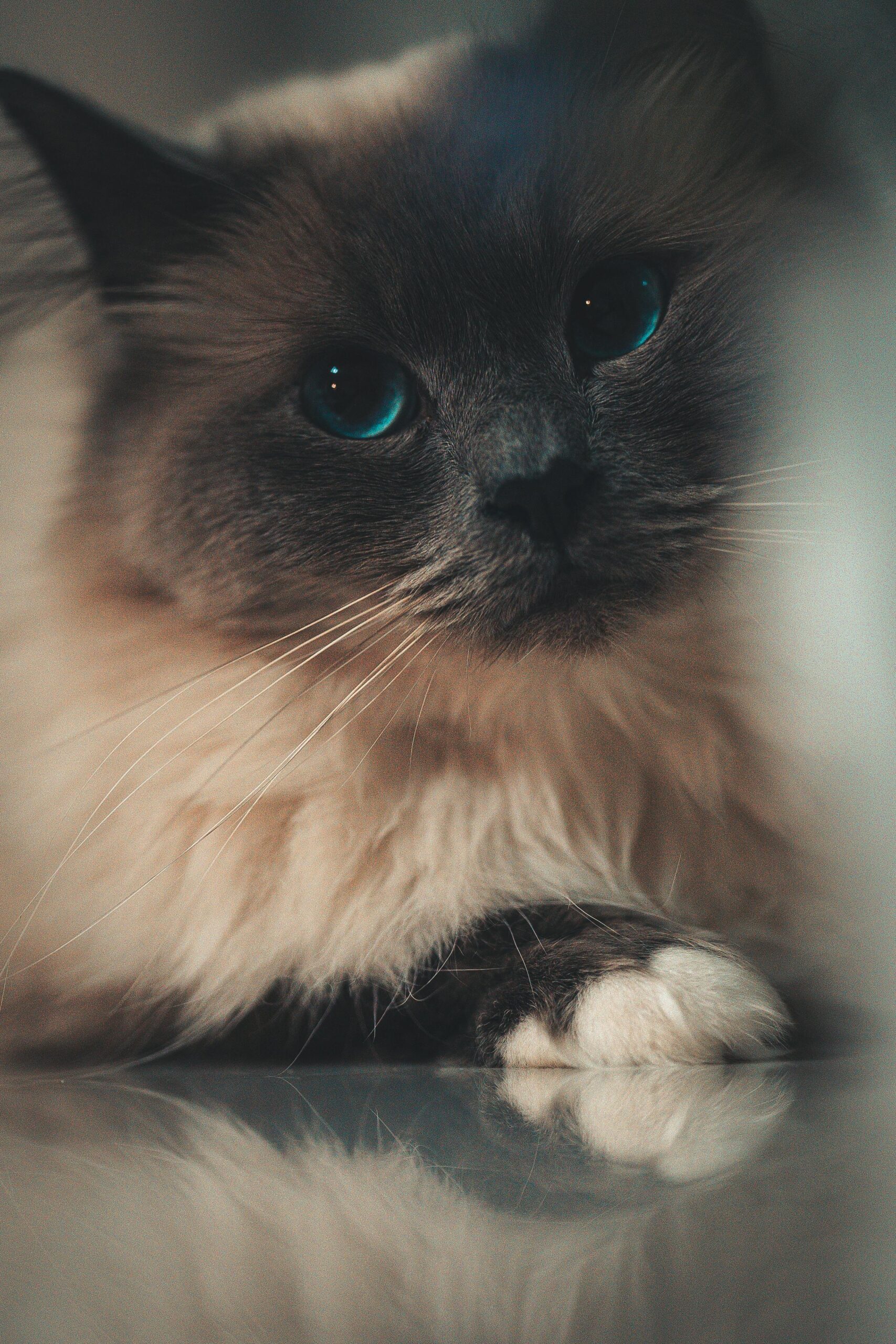

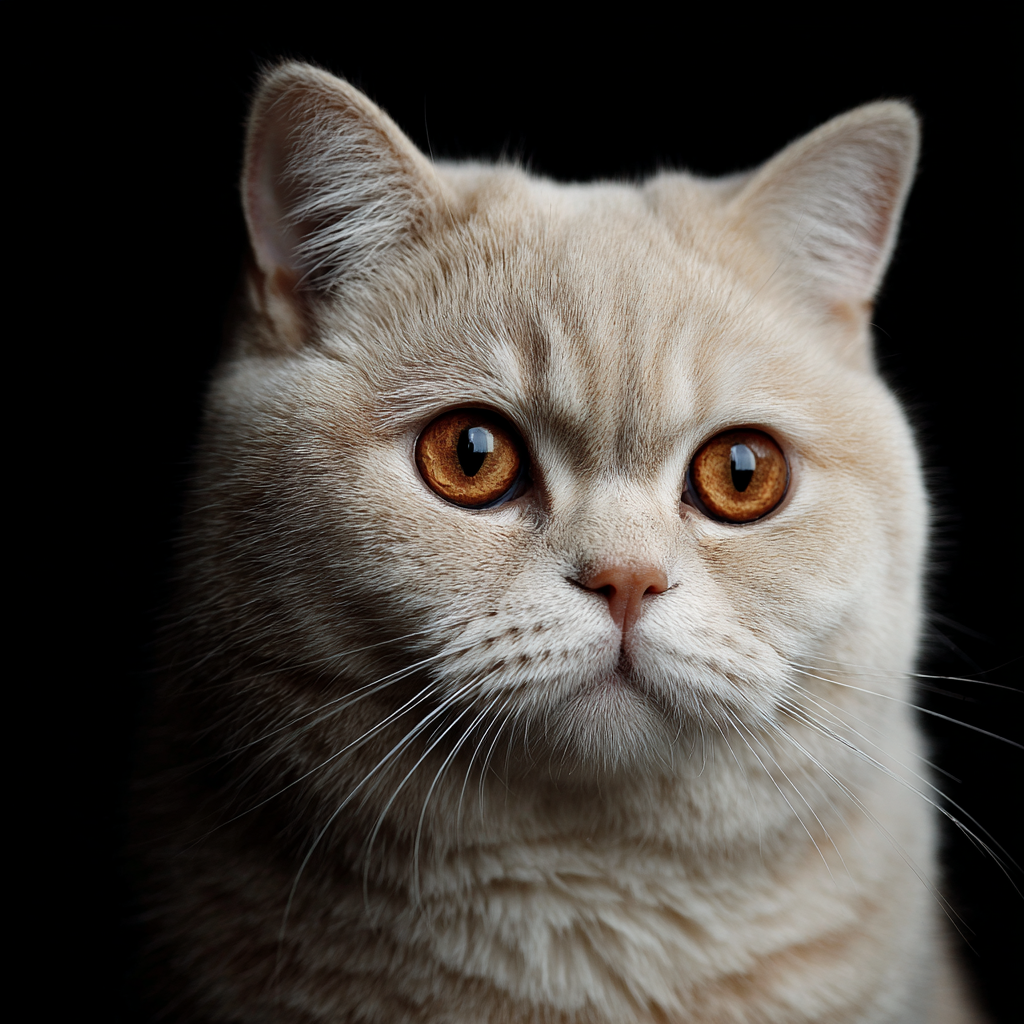
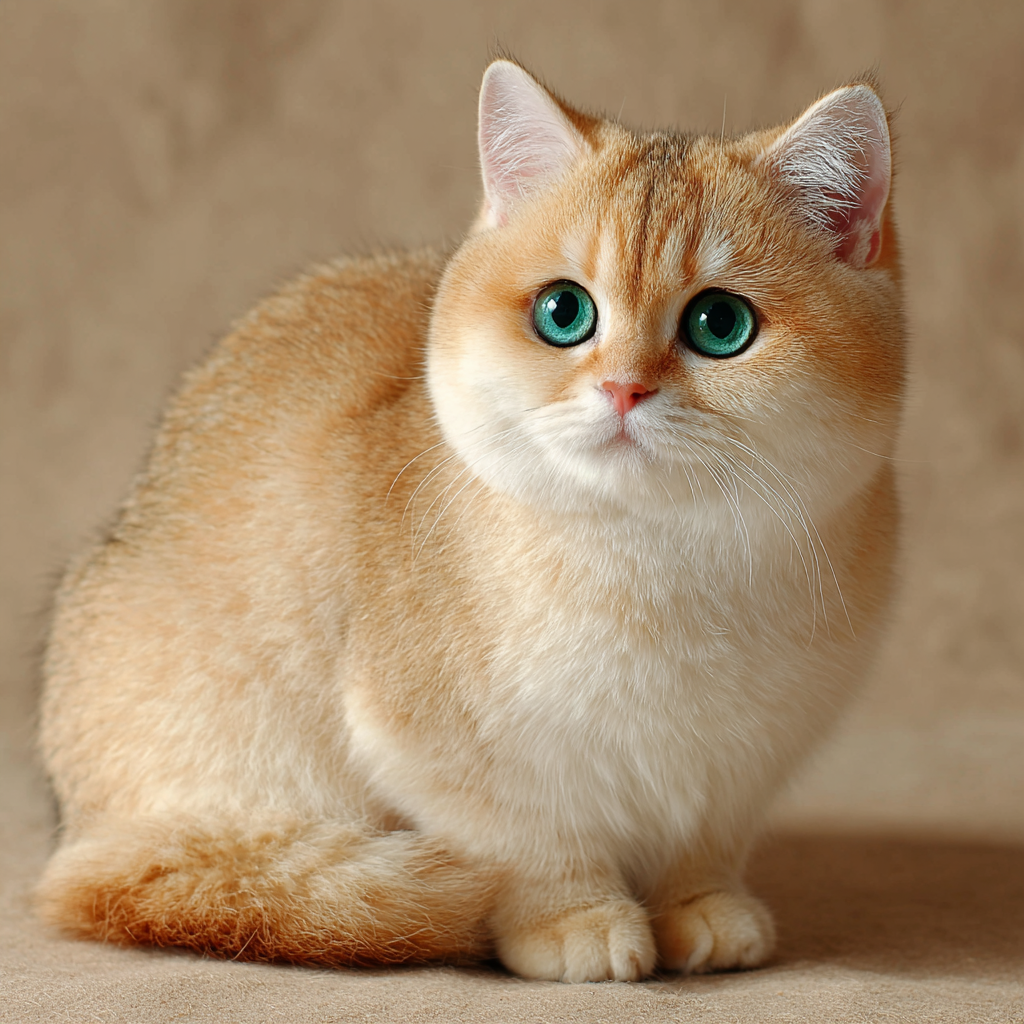
Read the Comments +